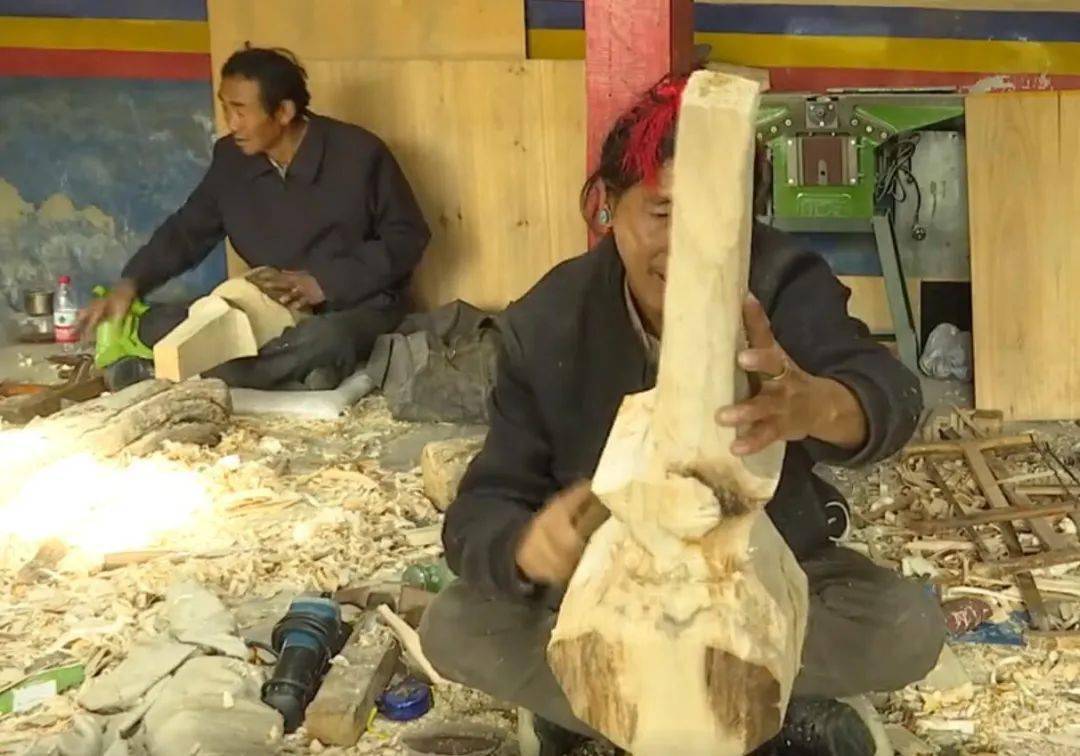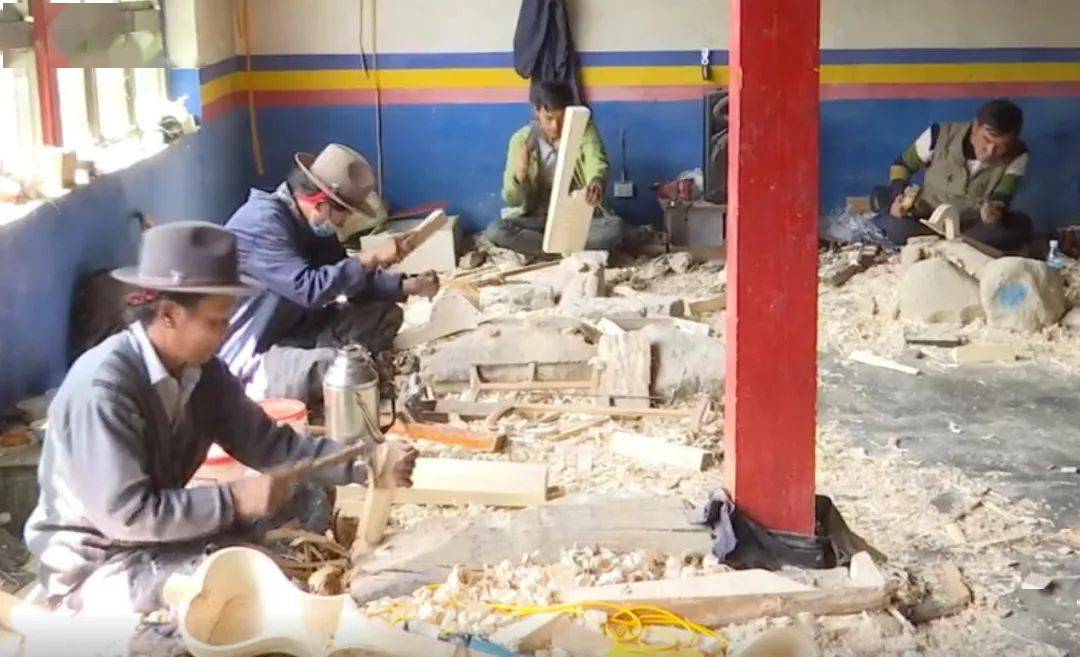Zha Nianqin making technology

Zhanian is one of the representative Tibetan traditional musical instruments with a long history and widespread circulation. It spread to the Tibetan area, and it is very popular in Lazi County. Latse County is known as the "Hometown of Harmony" and is famous all over the world for playing and singing Zha Nian. Zha Nian processing in our county is slightly distributed in the county area. (Lunzhu) As a non-genetic inheritor of the county-level Zha Nian production skills, the sound quality of Zha Nian is better than that of other craftsmen.
A traditional qin consists of a sound box, headstock, stem, pegs, horses and strings. The body is mostly made of mulberry, birch, pine and walnut. The size of the piano body varies, and the common ones are 100 cm-110 cm in length. The sound box is like a half-gourd-shaped cut, about 27 cm long, made of a whole piece of wood hollowed out, and most of the backs are engraved with prismatic patterns. The front of the sound box is covered with sheepskin, deerskin, fish skin or python skin, with a width of 14 cm-16 cm. Since the raw material of python skin is rare, some artists will draw scaly patterns on the sheepskin of the resonance box. Although the sound is still not as good as that made of python skin, it can also play a very good decorative role. Above the leather surface of the sound box, there is a meniscus-shaped sound hole, which is where Zhanian was born. According to collectors, this sound hole is the cherry mouth of the legendary Goddess of Wonderful Sound. In Tibetan folklore, it is the Goddess of Wonderful Sound who taught Zha Nian's playing skills to the Tibetan people, and Zha Nian herself is also the incarnation of the Goddess of Wonderful Sound. When people play Zha Nian, it is as if the goddess of wonderful music is showing her natural voice. At the same time, the placement of Zha Nian is also very particular - the round resonance box is the head of the Goddess of Wonderful Sound in the eyes of the Tibetan people. head down.
Since 1994, Lunzhu began to study with her father, mainly making Zha Nianqin. Through oral transmission, after 8 years of practical experience, her craftsmanship has caught up with her father. Decades of tempering have formed its own production style. He pondered the characteristics of Zha Nianqin making skills by himself, and inherited and developed Lazi Gulong's Zha Nianqin making skills.
Qunpei takes it as its mission to inherit the craftsmanship of Lazzha Nyin, and established the Phuntsok Lin Township's traditional six-stringed piano national handicraft farmer professional cooperative in Phuntsoglin Township. In the team, he leads carpenters to learn Zha Nyin production. He has played an exemplary role in the production of Zha Nianqin.

There are three kinds of Tibetan knives made in Lazi area: long knives, short knives and small knives. The longest knives are 1 meter long, the short knives are about 40 centimeters long, and the small knives are only a dozen centimeters. The scabbard is also very elegantly clad with silver or copper. Some are also engraved with flower and animal patterns, and some are even inlaid with jewelry, gold-plated, etc., which are extraordinarily gorgeous and elegant. Among the Tibetan knives produced in Shigatse, the Lazi Tibetan knife is the most famous. It is characterized by a long history, excellent steel quality, tough blade, fine carving and simple shape. It is not only loved by Tibetan people, but also by domestic and foreign tourists. welcome.
The inheritors of the Lazizilong Tibetan knife represented by Nima Wangla participated in the exhibition and sales activities of the Western Materials Exchange Conference held in Lazi County from 2013 to 2019. In 2019, he participated in the Lazi County Duixie Cultural Tourism Festival and the Yajiang Riding Activities intangible cultural heritage exhibition and sales activities. In 2019, he participated in the cultural heritage day intangible cultural heritage exhibition and sales activities held by the autonomous region, and in 2018, he participated in the intangible cultural heritage exhibition and sales activities of the Mount Everest Cultural Tourism Festival in Shigatse.
 渝公网安备 50010702504639号
渝公网安备 50010702504639号